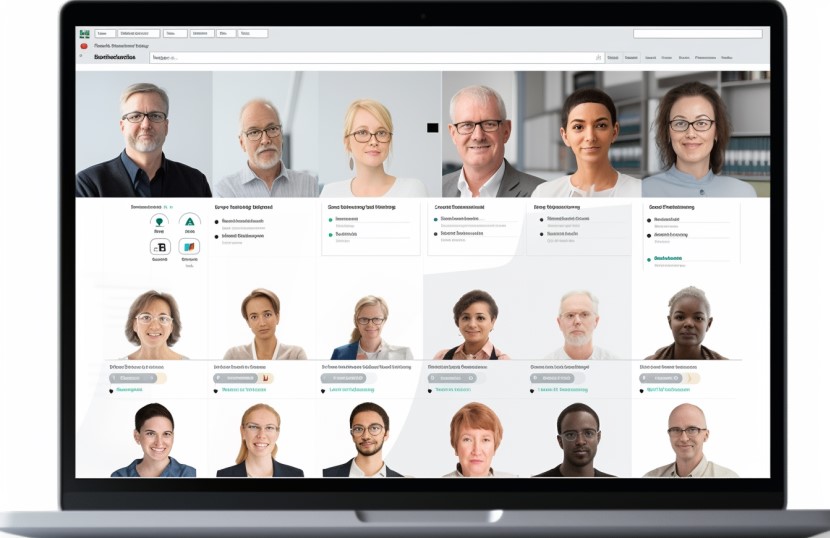I. Introduction to Prompt Engineering
Prompt engineering is a type of engineering that focuses on creating things that are easy to use and understand. It involves designing things like computer programs, websites, and even everyday items like kitchen appliances. The goal of prompt engineering is to make it easy for people to use the things that prompt engineers create.
For example, when designing a website, a prompt engineer would make sure that it is easy to use, easy to find the information that you need, and that it looks visually appealing. They would also make sure that it loads quickly and that it is compatible with different types of devices and browsers.
When designing a kitchen appliance, a prompt engineer would make sure that it is simple to operate and understand. They would also design it with safety in mind so that it is easy to use without any risk of injury or damage.
Prompt engineering is an important part of our lives because it makes it easier for us to use the products and services that we use every day. It makes it easier for us to understand how things work and to find the information that we need quickly. Without prompt engineering, our lives would be a lot more difficult and complicated.
A. Definition of Prompt Engineering
Prompt engineering is a type of engineering that focuses on creating helpful prompts that guide people to do things more efficiently. Prompts are like instructions that help people understand how to use a product or service. Prompt engineering is important because it helps people understand how to use complicated products or services quickly and easily.
Examples of Prompt Engineering
One example of prompt engineering is the prompts that you see when you buy something online. The prompts help you to choose the right product or service, enter your payment information, and go through the checkout process. Another example is the prompts used in a video game. The prompts help you to learn how to play the game, making it easier to understand and enjoy the game. Finally, prompts are used in many software applications to help the user understand how to use the software. These prompts help the user complete tasks more quickly and easily.

B. Overview of the Field
Prompt engineering is a field that is all about using words, ideas, and technology to create messages that are meant to encourage people to do something. Prompt engineers use words and technology to create “prompts” that help people understand what they need to do and why they should do it. Prompts can include messages, images, videos, and other forms of communication. They are used to get people to think or act in a certain way. For example, a prompt might be used to encourage people to vote or to remind them to take their medicine. Prompt engineers use their knowledge of communication and technology to create effective prompts that people can easily understand and act upon.
Prompt engineering is a form of communication that can involve different types of media, such as words, images, videos, and audio. It is used to create messages that are meant to encourage people to take action. Prompt engineers use their knowledge of communication and technology to create effective prompts that people can easily understand and act upon. They research the audience and the message to create effective prompts that get the desired response.
Prompt engineers must be creative and organized in order to be successful. They must be able to think of creative ways to get people’s attention, as well as organize their ideas in a way that is easy to understand. They must also be able to use different types of media, such as words, images, videos, and audio, to create effective messages.
Prompt engineering is used in many different areas, such as advertising, education, politics, healthcare, and more. It is used to create messages that are meant to get people to take action. Prompt engineers use their knowledge of communication and technology to create effective messages that people can easily understand and act upon.
C. Benefits of Learning Prompt Engineering
Learning prompt engineering can be very helpful and can open up a lot of doors for you in the future. Prompt engineering is the art of creating systems, tools, and processes that help people become more efficient and effective in their work. It can help you develop skills like problem-solving, communication, and organization.
One of the greatest benefits of learning prompt engineering is that it can help you become more productive in your work. With prompt engineering, you can create systems and processes that are designed to make tasks easier and more efficient, so you can get more done in less time. This can help you save time and energy, and make you more productive.
Another benefit of learning prompt engineering is that it can help you develop better problem-solving skills. Prompt engineering involves coming up with creative solutions to difficult problems, and this can help you become a better problem solver. With better problem-solving skills, you can tackle more complex tasks and come up with effective solutions.
Prompt engineering can help you develop better communication and organizational skills. With prompt engineering, you can create systems and processes that make it easier for people to communicate and collaborate with each other. This can help you become a better team player, and help you work more efficiently.
Prompt engineering can also help you develop better project management skills. When you learn prompt engineering, you learn how to create systems and processes for managing projects. This can help you plan and track projects more effectively, and make sure that tasks are completed on time and to the highest standards.
Learning prompt engineering can also help you develop better customer service skills. When you learn prompt engineering, you learn how to create systems and processes for providing better customer service. This can help you respond to customer inquiries more effectively and quickly, and make sure that customers have a positive experience with your business.
Finally, learning prompt engineering can help you become more organized. With prompt engineering, you can create systems and processes that help you stay organized and on top of tasks. This can help you stay on top of deadlines and make sure that tasks are completed on time.
II. Fundamental Concepts
Fundamental concepts in engineering are ideas and principles that form the basis of engineering. They can include things like mathematics, physical laws, and principles of design.
Math is an important part of engineering, because it helps engineers figure out how to build things that meet specific requirements. For example, math helps engineers figure out how to make a bridge strong enough to hold a certain amount of weight. It also helps engineers figure out how to make sure a building is stable and will not collapse.
Physical laws are another important part of engineering. These laws help engineers understand how materials like steel and concrete behave under different conditions. This helps engineers make sure materials are used properly, and that a building or structure won’t collapse.
Finally, principles of design are important in engineering. These principles help engineers make sure they create something that works well and looks good. For example, engineers have to consider things like the shape of a building, the colors used, and the layout when designing a structure.
By understanding the fundamental concepts of engineering, engineers can create things that are safe, functional, and attractive.
A. Overview of Design Thinking
Design Thinking is a way of solving problems that puts the needs of people first. It involves understanding the people who will be using a product or service, and then designing something that meets their needs. It encourages creative thinking and trying out different ideas to come up with the best solution.
The Process of Design
Thinking begins with understanding the problem. This involves researching the people who will be using the product or service, and asking questions to really understand their needs. After gathering this information, the next step is to brainstorm ideas for how to meet those needs. This can involve drawing, making models, or using other creative methods to come up with a solution.
Once a solution is chosen, it is time to test it out. This involves making a prototype of the product or service, and testing it with the people who will be using it. It is important to get feedback from the people who will be using the product or service, so that any problems can be identified and the solution can be improved.
Finally, it is time to launch the product or service. This involves making sure that it is ready for use, and that the people who will be using it are properly trained.
Design Thinking is an important way to make sure that products and services are designed with people’s needs in mind. By understanding the people who will be using a product or service, and then testing and refining it, it is possible to create solutions that really meet their needs.
B. Understanding the Design Process
Designing is the process of creating something new. It can be anything from a building to a toy or a computer game. It involves making sure that the design meets the needs of the people who will use it. This means looking at the problem and coming up with a solution that works.
The design process has several steps. First, you need to understand the problem and the people who will be using the design. Then, you need to come up with ideas and solutions that might work. After that, you need to create a plan by deciding which materials and tools you will use. Then, you need to build a prototype or a model of your design. Finally, you need to test it to make sure it works and meets the needs of the people who will use it.
Designing is a process of trial and error. You may come up with ideas that don’t work, or that need to be changed. That’s why it’s important to keep experimenting and refining your design until you have something that works.

C. Working with User Personas
Working with user personas means creating characters that represent the types of people who might use your product or service. These personas provide an easy way to understand the needs and wants of different user types.
When creating personas, you should start by asking questions like: Who are the people using the product or service? What are their goals? What do they need help with? Who are the decision-makers?
Once you have a good understanding of the different types of users, you can create specific personas that represent each type. For example, if you’re creating a website for a clothing company, you might create personas for young teenagers, working professionals, and retirees. You can give each persona a name, age, job, hobbies, and goals that match their user type.
Using these personas, you can design an experience tailored to each user group. You can create features that are helpful for young teenagers, for example, or create a design that appeals to working professionals. This helps you create a better product or service that meets the needs of all your users.
D. Identifying Problems
Identifying problems means figuring out what isn’t working right or what needs to be improved. To do this, you need to think carefully and use your knowledge and experience. You might look at a situation and decide that something needs to be changed to make it better.
For example, let’s say you’re in a classroom and the lights are too dim to see the board. That’s a problem. You’d need to figure out what’s causing the problem, like a burned-out bulb, and then find a solution, like changing the bulb and making the lights brighter.
In a broader sense, identifying problems can also mean recognizing patterns in the world and figuring out how to solve them. You might look at the environment and notice that the air is polluted, or look at animal populations and realize that some of them are endangered. In these cases, you would need to do research to figure out what exactly is causing the problem and then come up with ways to fix it.
Identifying problems isn’t always easy, but it’s an important skill for making the world a better place. With the right mindset and enough practice, you can become an expert at it!
III. Concepts of Prompt Engineering
Prompt engineering is the practice of designing and developing software applications or services with a specific focus on user interaction and user experience. It involves designing user interfaces that are intuitive and easy to use, while also taking into account the user’s context, goals, tasks, and preferences.
The goal of prompt engineering is to create an enjoyable and productive user experience by providing the user with the right information at the right time. This is accomplished by creating prompts that are timely, relevant, and actionable. It also requires understanding the user’s needs and providing them with the right tools and features to accomplish their tasks.
Prompt Engineering Process
Prompt engineering is an iterative process that requires collaboration between product managers, designers, developers, and other stakeholders. This collaboration helps ensure that all aspects of the design are aligned with the user’s needs and the product’s goals.
The process begins by understanding the context and goals of the user. This includes researching user behaviors, understanding user preferences, and identifying user tasks. This information is used to create a user story that outlines the user’s needs and desired outcomes.
The next step is to create a design that meets the user’s needs.
A. Understanding the Prompts Framework
Prompts are an important part of user experience design and engineering, allowing users to interact with applications in a more natural and intuitive way. The Prompts Framework is a set of tools and techniques used to create and modify interactive prompts that are designed to elicit user input.
At its core, the Prompts Framework is a collection of components that enable developers to create, modify and execute prompt-based applications. The framework is composed of different components that are used to define the prompt’s structure, identify the user’s intent and provide the necessary feedback.
The Prompts Framework includes a set of components that enable developers to define the structure of the prompt. This includes the type of prompt, the text or language used, the prompts’ order, and the output that the prompt should provide. The Prompts Framework also includes components that identify user intent, providing a way to determine the user’s needs and goals.
Once the structure of the prompt has been defined, the Prompts Framework provides the necessary tools to create and modify the prompt. These tools allow developers to customize the prompt text, add buttons, and specify the action when a user enters a response. The Prompts Framework also includes components that allow developers to specify how the prompt should respond to user input, such as providing an output or redirecting the user to a different page.
Finally, the Prompts Framework provides tools to test and debug the prompt as well as tools to monitor user interactions with the prompt. This allows developers to see how users interact with the prompt, identify any potential issues and make any necessary changes to the prompt.
Understanding Prompts Context
Prompts context is an important concept in the Prompts Framework. It is the set of variables and conditions that define the context of a prompt, such as the user’s location, language, device type, etc. Prompts context is used to determine what type of prompt should be displayed and how the prompt should respond to user input.
The Prompts Framework provides tools to define and modify the context of the prompt. This includes setting the language of the prompt, setting the device type, and setting the user’s location. The Prompts Framework also allows developers to define custom variables that can be used to determine the context of the prompt.
Once the context of the prompt has been defined, the Prompts Framework provides tools to identify the user’s intent and provide the appropriate response. This includes identifying the user’s goals and providing the appropriate output or redirecting the user to another page.
Understanding Prompts Interaction
Prompts interaction is a concept used in the Prompts Framework to define how a prompt should respond to user input. Prompts interaction includes providing feedback to the user and taking appropriate action based on the user’s input.
The Prompts Framework provides tools to define the prompt’s interaction with the user. This includes specifying the type of feedback to provide, such as text or audio, and specifying the action that should be taken based on the user’s input. The Prompts Framework also provides tools to define the conditions for taking action, such as when a user enters a certain keyword or phrase.
Once the prompt’s interaction has been defined, the Prompts Framework provides tools to test and debug the prompt. This allows developers to test how the prompt will respond to user input and identify any potential issues. The Prompts Framework also provides tools to monitor user interactions with the prompt, allowing developers to see how users interact with the prompt and make any necessary changes.
B. Developing Prompts for Different Audiences
Developing prompts for different audiences is an essential skill for prompt engineers. It involves understanding the needs of the audience and crafting a prompt that will help them achieve their goals.
The first step in developing prompts for different audiences is to understand the audience’s needs. This includes the level of technical understanding they have, the type of tasks they may be performing, and their overall goals. It’s important to have a good understanding of the audience’s needs so that the prompt can be tailored to meet them.
The next step is to create the prompt. This involves deciding what type of prompt to use, such as a question, statement, or command. Once the type of prompt is determined, the words and phrasing of the prompt should be carefully selected to ensure it is clear, concise, and easy to understand. It’s also important to consider the tone of the prompt, as it should be friendly and inviting.
Once the prompt has been created, it is important to test it with the intended audience. This will help to ensure the prompt is effective and that it meets the needs of the audience. Testing the prompt with a small group of users is often the best approach, as it will provide feedback on the prompt’s usability and help to identify any potential issues.
Once the prompt has been tested and any issues have been addressed, it should be implemented in the application or system. This will ensure the prompt is delivered to the intended audience and can be used effectively.
Developing prompts for different audiences is a complex process, but it is essential for prompt engineers. It requires an understanding of the audience’s needs, the creation of an effective prompt, and testing and implementation of the prompt. By taking the time to carefully craft a prompt, prompt engineers can help ensure users have a positive experience with the application or system.
C. Applying Prompts
Applying prompts is the process of adding prompts to a conversation, typically to guide the conversation in a specific direction or keep a conversation on track. Prompts can be used to encourage people to give more information, to lead a conversation away from a topic, or to ask questions about a topic. Prompts can be verbal, such as a question or a request for clarification, or non-verbal, such as a gesture or a pause.
When applying prompts, it is important to be mindful of the context of the conversation. For example, a prompt may be inappropriate if the conversation is already on a certain topic. Additionally, prompts should be used sparingly and tactfully, so as to not disrupt the flow of the conversation.
Prompts should also be tailored to the individual. For example, an individual who is shyer may need more verbal prompts than an individual who is more outgoing. Additionally, an individual who is more experienced in a certain topic may require more nuanced prompts than an individual who is less knowledgeable.
Finally, it is important to be aware of how the prompts are received by the other person. If the other person appears uncomfortable or is not responding to the prompt, it may be necessary to adjust the type of prompt or the way in which it is delivered. Additionally, if the other person is responding positively to the prompt, it may be a good idea to continue using similar prompts in the future.
Overall, applying prompts is an important skill to have when engaging in conversations with others. With practice and attention, it is possible to use prompts effectively to keep conversations on track and encourage meaningful dialogue.
IV. Advanced Topics
Command-line argument parsing is a process of interpreting strings of text passed into a program or script via the command line interface. This process involves breaking the arguments into tokens, validating their data type, and interpreting the arguments according to the context of the program/script.
Command-line argument parsing is a necessary step for any program that needs to access command-line inputs. It allows the program to interpret and validate user input, which can be used to configure program behavior, launch functions, and pass data to the program.
The process of command-line argument parsing typically involves three steps. First, the program will split the arguments into tokens. This involves breaking the string of text into individual words or numbers. The program will then validate the data type of the tokens, making sure that each token is of the correct type (i.e. a number, a string, etc). Finally, the program will interpret the tokens according to the context of the program. This allows the program to access the data and use it to configure program behavior or launch functions.
Environment Variables:
Environment variables are a set of variables that contain information about the user’s environment. These variables are typically set by the operating system and can be accessed by programs and scripts in order to configure their behavior.
Environment variables are stored in the user’s environment and can be accessed by programs and scripts. They are typically set by the operating system and can contain information such as the current user’s username, the current working directory, the system’s default language, and more.
Programs and scripts can access environment variables and use them to configure program behavior. For example, a program may access the user’s username and use it to determine the user’s preferences or launch a specific function.
Environment variables can also be set by users in order to configure program behavior. These user-defined environment variables can be used to override the system-defined variables, allowing the user to customize program behavior.
A. Working with Scenarios and Examples
Scenarios and examples are powerful tools for demonstrating the use and potential of a product or service. They provide concrete examples of how a product or service can be used in real-world situations, helping to illustrate the value to customers and potential buyers.
When working with scenarios and examples, it is important to provide clear and detailed descriptions of the use cases. This should include the context of the scenario, the steps taken to reach the desired outcome, and any challenges or issues encountered. This will help readers to understand the full scope of the solution, and how it can be used to solve their own problems.
When creating scenarios and examples, it is also important to think about the audience. Different types of readers may have different levels of technical expertise or knowledge, so it is important to tailor the information provided accordingly.
It is important to consider the different types of media which can be used to present scenarios and examples. For example, visual elements such as screenshots and videos can be used to provide a more engaging experience for readers and viewers.
Finally, it is important to ensure that all scenarios and examples are tested and verified to ensure they are accurate and up-to-date. This is important to ensure the information provided is reliable and trustworthy.

B. Applying Prompts to Specific Problems
Prompt engineering is the process of designing and creating prompts—questions, instructions, and other cues—in order to facilitate the successful completion of a task or the resolution of a problem. Prompt engineering can be used to solve specific problems or reach specific objectives.
When applying prompts to specific problems, it is important to consider the context of the problem and the audience. For instance, the language used in a prompt should reflect the language and terminologies of the problem domain, and the complexity of the prompt should match the experience level of the audience.
Prompt engineering should also be designed with the user experience in mind. Prompts should be clear and concise, and should provide only the necessary information needed to complete the task or resolve the problem. Unnecessary information should be avoided as it can lead to confusion and errors.
It is also important to ensure that the prompt contains all the necessary information for the user to act. This includes the expected response, any options available, and any constraints that apply.
When creating prompts for problem-solving, it is important to consider the goal of the prompt. While some prompts are designed to guide the user through the entire process, others are designed to help the user identify and solve the problem. In either case, it is important to provide feedback to the user in order to help them understand their progress or the results of their actions.
Finally, it is important to consider the impact of the prompt on the user. Prompts should be designed in a way that encourages the user to continue to the next step, and should provide the user with a sense of reward or accomplishment. Achieving this balance is key to successful prompt engineering.
C. Troubleshooting Prompts
Troubleshooting prompts is the process of identifying and resolving issues related to the design, implementation, and operation of prompts in a system. Prompts are used to provide users with information or to request input from the user. Troubleshooting prompts involves analyzing the prompt design, implementation, and operation to identify and address any potential problems.
When troubleshooting prompts, it is important to consider the context of the prompt and the user’s goals. You should consider how the prompt will be used, what information it needs to convey, and how it should interact with the user. It is also important to consider the user’s experience. Does the prompt flow logically? Is it easy to understand? Is it clear what the user should do?
In addition to analyzing the prompt design, troubleshooting prompts requires testing the prompt in various scenarios. How does the prompt respond when users provide valid information? How does it respond when users provide invalid information? How does it respond when users provide no information? Testing the prompt in multiple scenarios can help identify issues that would otherwise be difficult to detect.
Finally, troubleshooting prompts require the assessment of technical issues. Is the prompt coded correctly? Does the prompt interact properly with other components of the system? Are there any security or performance issues? Assessing technical issues is critical to ensure that the prompt is properly implemented and operates as expected.
To sums things up, prompt engineering is a powerful tool for creating engaging user experiences. By understanding the fundamentals of design thinking and user personas, we can develop prompts that can be applied to various scenarios and problems. With practice and experience, we can hone our skills to create even more effective prompts. To further our learning, we can explore more advanced topics such as applying prompts to specific problems and troubleshooting existing prompts. With continued practice, we can become experts in prompt engineering, and create engaging user experiences that drive positive outcomes.



